A Technology Horror Story: The Day the Marketing Guy Joined the Hackathon
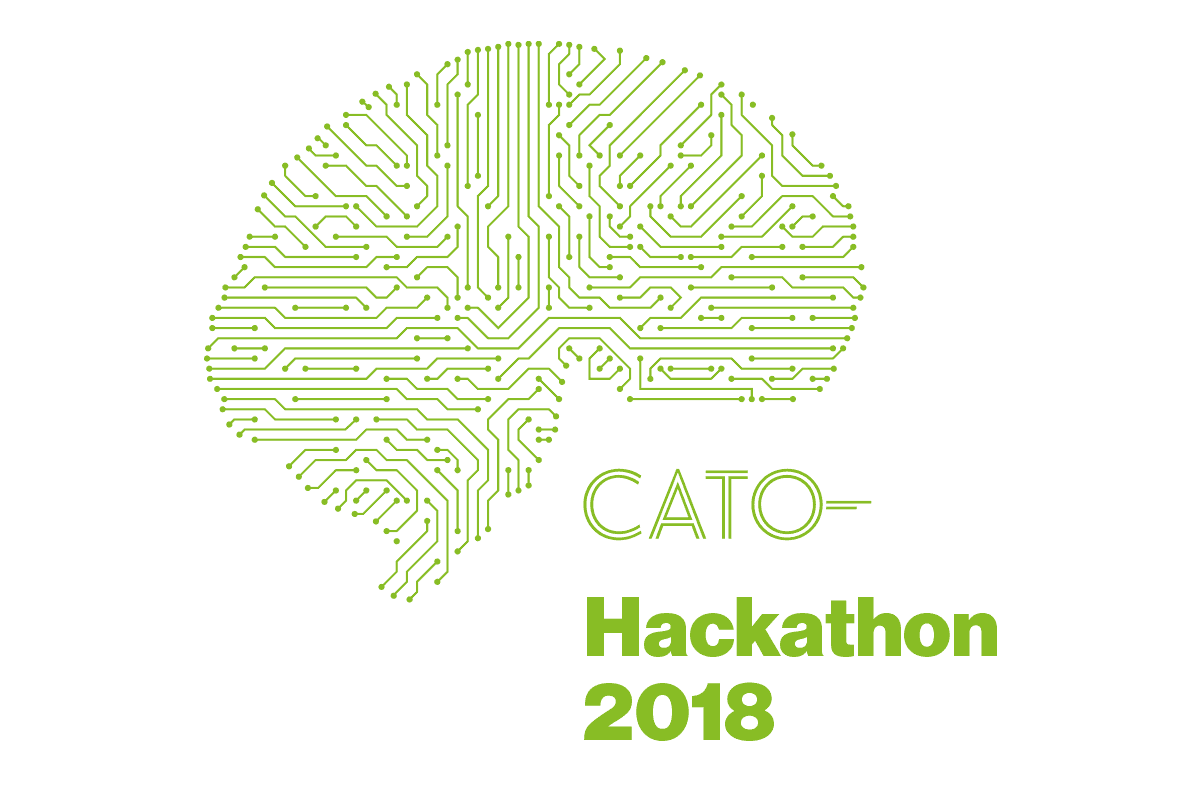
Table of Contents
|
Listen to post:
Getting your Trinity Audio player ready...
|
The fifth floor of the cafeteria at Cato’s Israeli office transformed last Thursday morning nearly two weeks ago into a celebration of innovation, coding, and food. Our 2018 Hackathon was kicking off with a sumptuous breakfast buffet decorating the tables, and flags of the 10 project teams dotting the floor-to-ceiling windows that looked out onto southern Tel Aviv.
Hackathons are usually meant for folks who know something about, well, hacking code. But the dynamic duo who conceived and ran the event — Eyal, our director of product management, and Jordana, Cato’s human resources manager – poked, prodded, and dare I say implored, every employee to join the festivities — and I do mean everyone. The call to sign up for Cato’s Hackathon wasn’t just limited those who could program in C but even employees who could spell with a C – all were encouraged to sign up. Thankfully singing in C wasn’t a requirement.
Being the courageous marketer that I am, I answered that call, journeying from my comfortable 4th floor office up into the wild world of engineering and development. And as I stood there, munching my way through a quiche and mini-sandwich the great existential question that any marketing guy should ask himself at a Hackathon once again crossed my mind:
Just what the heck was I doing here?
Clearly, I wasn’t the only one. “Good to have you, Dave.” I turned and there was our CTO, Gur Shatz walking past. “I am curious to see how you’re going to contribute,” he said with a slight smile on his lips.
Cato Cloud sits on an enormous data warehouse of networking and security information. One way to tap that information is through our recently announced Cato Threat Hunting System (CTHS), but there are millions — well, at least 10 — other ways. Some team were going to develop new kinds of security services, others focused on creating new tools, and still others looked at new kind of platforms for accessing the Cato Cloud. As an old-time networking hand and Marvel fan, I signed up to develop “Heimdall”, a new kind of tool for measuring end-to-end latency, with team Uselesses (don’t ask).
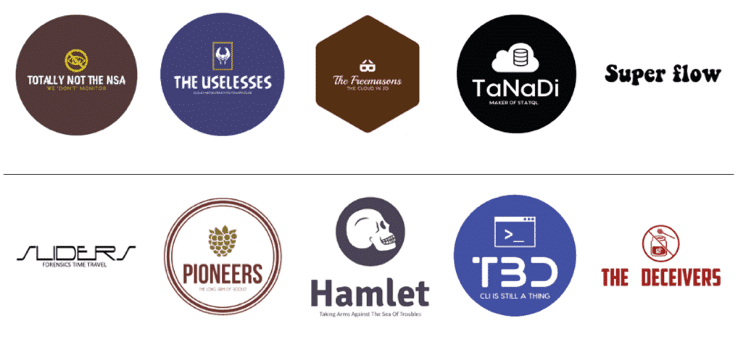
Expecting to help the team code wasn’t realistic, that much I knew. The last time I programmed punch-cards were just leaving this world, and objects were something you touched. I could write world class functions in Fortran or Pascal, if you insist, but somehow, I didn’t think that was going to help very much.
It’s not that I’m technically clueless, mind you. I have spent 20+ years studying, analyzing and evaluating networking technologies in very sick detail. Marketing people usually end-up calling me an engineer, which is kind of funny because engineers usually call me a marketing person. I guess that makes me something of a technical marketing mashup — hence my evangelism title.
All of which meant I was geeky enough to be thrilled to create a better network measurement tool, but uncertain exactly how to help. If networking expertise, ideation, positioning, or pitching were needed by team Uselesses, I’d be the man. If not, coffee making was a possibility. Never having been at a Hackathon, though, it was hard to know which of those skills would be required.
No Turning Back
Yeah, I thought about bowing out gracefully. I slacked Eyal about how he saw us marketing types fitting in. “‘I will be mentoring and hosting. If you feel like contributing – you are seriously welcomed to do it anyway you can,” he Slacked back. No daylight there. I checked with Vadim, the lead on team Useless, about if there were issues with me joining (hint, hint). “It’s fine,” he said, “Happy to have you with us.” No luck.
So, I gave up and joined. After all, how bad could it be. I wasn’t going to be the only non-developer or engineer there, right? Nice try. As it turns out, no other sales (sales engineering aside), marketing, or finance person joined in the festivities.
Which brings us back to Gur. I smiled, mumbled something, and then went off to join Vadim, Koby and Dudi — DevOps team extraordinaire — to be tucked away in a small, glass-lined conference room with a view of the Mediterranean and 12 hours to build a cloud measurement powerhouse.
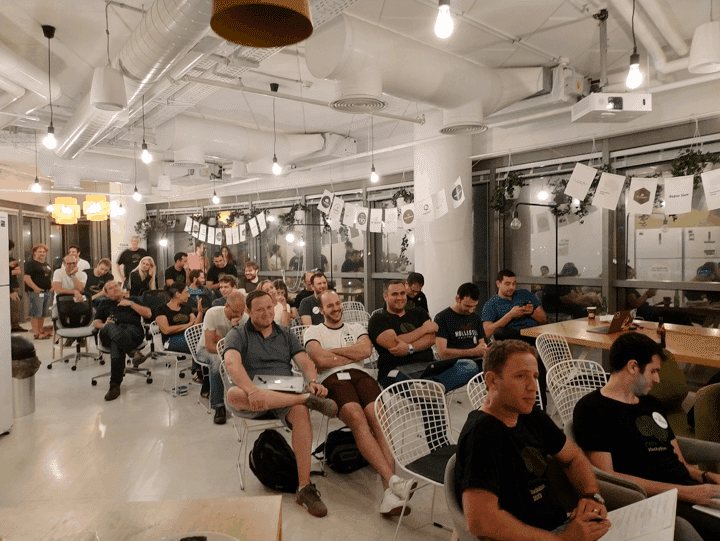
Building Heimdall
When I got in the guys had already white-boarded what they were doing and had turned to their laptops to start building. “We’ve already built a skeleton on AWS to hold our code,” explained Koby.
“Skeleton. Is that like an outline?” I asked. Clearly, I was out of my element. But I was here for the next 10 hours and there were just so many jokes I could crack and times I could offer to get folks coffee.
The guys had spent time thinking about Heimdall and I needed to catch up. Like any good marketing guy, I started questions. “Why are we building this tool?”
“It’s going to help prospects determine their end-to-end latency with Cato,” replied Vadim.
“Can’t we do that today by having them ping our PoPs?”
“We can, but you need to know which PoPs to ping and that’s not always obvious.”
The software in Cato Sockets, our SD-WAN appliances, automatically identifies and connects to the optimum PoP. But obviously enterprises evaluating Cato didn’t have that software and the optimum PoP wasn’t always obvious. A myriad of factors, such as Internet routing and the way underseas cables run, meant that the physically closest PoP may not be the one with the least latency. With more than 40 PoPs today around the globe, the question comes up pretty frequently — a problem with having the world’s largest independent backbone.
We had other ways of determining end-to-end latency before the Hackathon, of course, which made me even more curious as to why we were building Heimdall. I asked, and kept on asking questions, and after about 20 minutes of being my annoying self — and Vadim, Koby, and Dudi being patient with me — we pulled out all the ways this little project was going to change Cato, networking, and the fate of humanity.
As the day progressed, team Uselesses started flushing out the features of Heimdall. Originally, we were tasked with identifying last-mile latency, but Dave, the Networking Nerd, knew that last-mile latency is small fraction of overall latency on global connections. Last-mile packet loss and jitter, on the other hand, are very important. I suggested we include those metrics in the product.
Metrics are nice, but without context they mean little. Dave suggested we find a way to add context and out of that conversation, came the results for optimum and direct paths across Cato Cloud – not necessarily the same thing. We also agreed to include end-to-end Internet measurements, but that would take a bit more time than we had at the Hackathon.
The conversation turned to exactly how to represent the data. We all had ideas, I had many. Dudi, our guy with the most front-end experience, was, shall we say, just a tad busy working with Koby on connecting the core components of Heimdall. Eventually he asked me to mock something up and that’s how the Marketing Guy became the UI Guy.
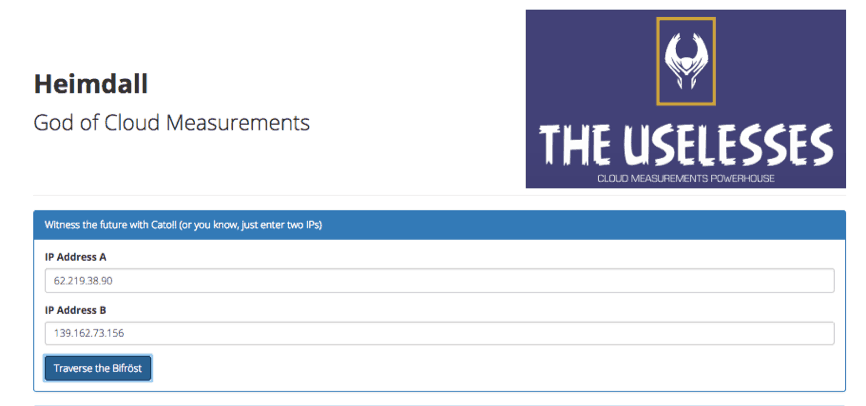
And so, the day went on. Drinks were served. Jokes were made. We each contributed our part of Heimdall. Koby and Dudi got the components connected. Vadim finished up on the network measurements and Dave? He mocked up the UI and finished the PowerPoint.
Time To Pitch
Time was up, and we filed in at 10:30pm to share our very cool sh*t. Team after team went up showing off what they had developed. Query tools that hadn’t existed a day before were suddenly workable. Deep analytics made simple by new kinds of visuals shown on the screen. Hardware platforms non-existent before we started were operational. Frankly, I was amazed at what could be created in such a brief period of time.
Eventually, our time came, and yours truly got up to do his marketing best. This was far more than a tool for measuring latency, I explained. This tool was going to shorten sales cycle, generate new leads, and improve Cato operations. We killed it on the PowerPoint — no bullets, axed the 10-point type, and nailed the bottom-line benefits for Cato. And by far the most brilliant thing I said was… “Now let me hand it over to the real brains behind this project — Vadim, Dudi, and Koby — who’ll demo this tool.” Vadim did the heavy lifting (like pressing a button on keyboard) and voila! Our tool identified the best PoP for both source and destination addresses.

The tagline on the bottom does NOT reflect a new kind of technology team.
Scrolling up, we also showed that Heimdall identified the end-to-end statistics for direct and optimized paths across the Cato Cloud.
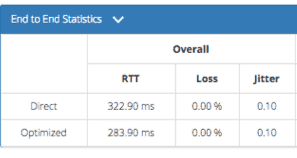
Actual results may improve once we apply our optimization algorithms.
In the end, the marketing guy did help the team Uselesses. Besides clarifying networking concepts for some of my more software-oriented compatriots, my efforts led to us tracking several metrics I think any networking-minded pro would want to know. I identified what we should show and developed the interface for how we’d show it with enough clarity that a UX person could ultimately make it presentable. And, of course, I drew out Heimdall’s applicability to the rest of Cato that led to final pitch, and the presentation.
And The Winner Is
The teams finished up and the judges retreated for deliberations. Meanwhile, Eyal treated us to hysterical music videos of us from JibJab.
After 30 minutes or so, the judges filed back in. “For second place, we picked Heimdall from team Uselesses,” said Ofir Agassi, our director of product marketing, “The project was well implemented, and we liked Heimdall’s ‘broad applicability’ to all aspect of Cato.”
Ca-chang. Our core message gets cited as the reason for the award. Not bad. And who said marketers can’t contribute to a Hackathon?
Yes, good marketing can make all the difference, but lest any marketers reading this piece (myself included) get too full of themselves, remember this: the team that took first prize had great a security researcher, solid developers —- and not a single marketing soul around.
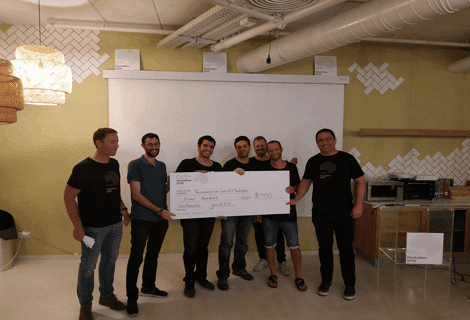
The post originally appeared in part on Network World at: https://www.networkworld.com/article/3284511/lan-wan/a-technology-horror-story-the-day-the-marketing-guy-joined-the-hackathon.html









